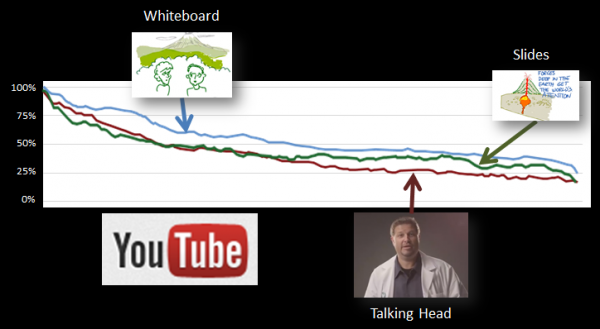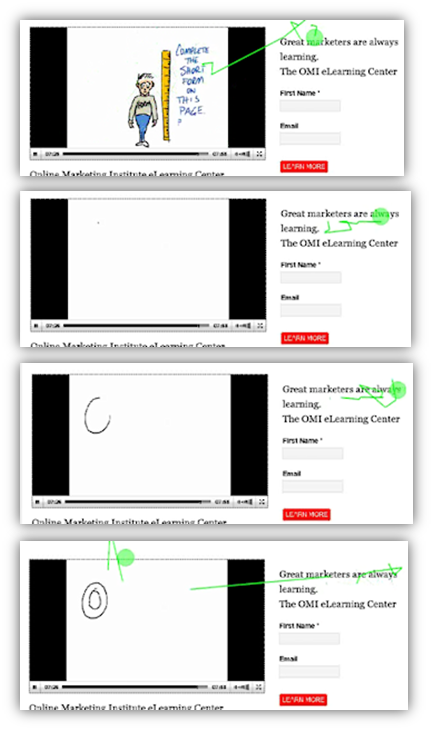Can You Really Increase Conversions By Decreasing Engagement?
Engagement is a magnetic “measure” of online effectiveness. You might call it an “engaging” metric. This is because it is a nice stand-in when real measures of sales, leads or subscriptions are too difficult to track or deliver disappointing results. “No, we didn’t increase sales, but look at the engagement!” is the mantra. The definition […]
Engagement is a magnetic “measure” of online effectiveness. You might call it an “engaging” metric. This is because it is a nice stand-in when real measures of sales, leads or subscriptions are too difficult to track or deliver disappointing results.
“No, we didn’t increase sales, but look at the engagement!” is the mantra.
The definition of “engagement” changes from channel to channel. On a landing page, it may mean tracking how many visitors scroll the page, click on a form field, or watch a video.
In social media, engagement can be measured by liking, commenting, following, connecting, uploading a photo – almost anything.
On your website, it may be measured by how many visitors bounce, how long they spent on the site or how many pages they saw during their visit.
In general, engagement is a predictive measurement. It doesn’t tell us how much money we’re making or how many new prospects we’ve identified. In general, a high engagement rate is considered a sign that we are more likely to get more sales or more leads.
As it turns out, this is not a very good assumption.
The Fine Line Between Engagement & Distraction
Having just come back from Conversion Conference East, my head is freshly filled with the odd workings of the human brain when interacting with the Web. In particular, Tim Ash’s mantra that rotating headers on an ecommerce home page will kill your conversion rate.
The motion of a rotating header draws visitors’ attention – it engages them – but it does so at the expense of their natural page-scanning behavior. If your constantly changing offers aren’t what the visitor came for, and their scanning is interrupted, then they won’t find a reason to dig deeper into your site.
In this scenario, the rotating header (or rotating logos, or rotating testimonials) on the page tests out as a distraction, not engagement. The primary difference between an engaging feature and a distraction is that one reduces your conversion rate while one increases it.
When doing split tests, it is not unusual for us to see a decrease in engagement for the winning treatment. In situations like this, if we focused on increasing engagement, we would be driving the conversion rates lower and lower.
The bottom line is this: Don’t rely on engagement statistics unless they correlate to a conversion rate. You want to be sure that engagement is predictive of conversion, and not a distraction. Engagement and conversion must move in the same direction.

Unfortunately, this means that you must solve the ROI problem. When ROI is hard to measure, engagement is usually put in the game. But, you may unwittingly be putting in his evil twin, distraction.

YouTube’s Viewer Attention metric would predict that “talking head” video would deliver the lowest conversion rate. In fact, it is the highest converting style of video. In this case, engagement doesn’t predict conversion.
Simplicity Rules For Landing Pages
If you’re driving search traffic to landing pages (as you should) distraction is more common than engagement.
The person who clicked on your PPC ad came expecting something specific. Your ad is a promise that the landing page must keep. If you place “engaging” content on a landing page, you are more likely to add to distraction.
Even things like a description of your company or your products should be well-considered before being added. If they build trust with visitors, they may be engaging and increase conversion rates. If they make the page harder to scan or obscure the key call to action, they are a distraction.
For each component you add to a landing page – or the ecommerce equivalent product page – ask yourself if that component is important to the action at hand. Does it make completing a form easier? Does it remove a barrier to clicking “Add to Cart”?
Even navigation and logos found in your corporate site template will add distractions. Consider the backwards landing page process.
The best way to ensure that you’re adding engagement and not distraction is to track visitors all the way to conversion. This means measuring revenue or lead count for each visitor.
Of course, once you’ve established a correlation between engagement and conversion, why bother looking at engagement at all? I don’t know.
Video Cuts Both Ways
A lot has been written about video and it’s ability to deliver a step up in conversion rates and revenue per visit. Because of the cost in time and money, we don’t usually test video. It’s as if we just don’t want to know.
The truth is that video is full of both engagement and distraction. In my Conversion Conference keynote, I stated that showing visitors video is like breaking a bottle against the back of their skull 30 times per second.
While there is a lot of research on how we watch Superbowl commercials, there has been little done on how we watch video more common to landing pages.
Until now.
In a partnership with Mirametrix Eye Tracking, we tested three kinds of video: talking head, webinar-style and drawn whiteboard. What we found is that video can be a major source of engagement as well as a distraction.

In this series of frames, a call to action in the video causes the viewer to look at the landing page form. Then, motion in the video seems to steal their attention back.
Our hypothesis was that whiteboard video would engage the viewer more, keeping them on the page and increasing conversion rates. When we looked at eye tracking studies, we saw that participants who viewed whiteboard video spent significantly less time looking at the copy and forms on our landing pages. We thought this might reduce conversion rates.
In the series of images at right, you can see that a call to action in the video directs attention to the landing page form. However, the scene changes and the animation seems to steal the attention away from the form and back to the video. The green dot is where the viewer’s eye is looking.
Tests Will Tell
Fortunately, we combined our eye-tracking study with a split test. As of this writing the talking head video and whiteboard video are outperforming the slide video, the latter of which has the least motion. You can participate here.
So, while eye-tracking data shows that motion will draw attention away from our call to action, it doesn’t seem to have a negative impact on conversions. The low-motion slide video like that delivered by webinars is converting more poorly by comparison.
How To Use Motion To Your Benefit
Motion can be a distraction or can increase engagement depending on how you use it. Based on our preliminary findings, here are some good rules to follow.
- Minimize motion of all sorts on a landing page. If you use video, repeat the page’s call to action in the video.
- Use talking head video and whiteboard video to teach or explain concepts. These keep the attention of visitors long enough for you to tell your story.
- Place calls to action in or near moving components.
- Test moving components including video to ensure they are increasing engagement (conversion) and not increasing distraction.
You can pre-order a copy of the video eye-tracking report today and get the complete results of the study.
Opinions expressed in this article are those of the guest author and not necessarily Search Engine Land. Staff authors are listed here.
Related stories
New on Search Engine Land